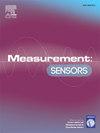利用吸收和内源性荧光技术监测透析治疗
Q4 Engineering
引用次数: 0
摘要
本研究探讨了血液透析治疗中尿毒症毒素的监测,除了尿素浓度,从减少缺乏个性化血液透析治疗引起的并发症的角度来看。利用实验室配制的对甲酚、牛白蛋白和双酚a分子混合溶液,采用吸收和荧光技术分析了中低质量分子。这些光学技术提供了在没有物理接触的情况下分析样品的优势,确保了在现实世界中实现连续处理监测的潜力。对透析液中这些毒素的实时监测可以深入了解血液浓度,增强透析治疗的优化和并发症的管理。考虑的吸收光谱落在紫外(240,400)nm范围内,而荧光光谱在选定的激发波长285 nm处获得。数据分析揭示了在吸收和荧光测量中分子浓度和信号强度之间的相关性。本文章由计算机程序翻译,如有差异,请以英文原文为准。
Towards the monitoring of dialysis treatment through absorption and endogenous fluorescence techniques
This study explores the monitoring of uraemic toxins in haemodialysis treatments, beyond urea concentration, in the perspective of reducing complications stemming from the lack of personalized haemodialysis therapies. Absorption and fluorescence techniques were employed to analyse low-middle weight molecules employing laboratory prepared solutions combining p-cresol, bovine albumin and bisphenol-A molecules. These optical techniques offer the advantage of analysing the sample without physical contact, ensuring the potential for implementation in a real-world scenario for continuous treatment monitoring. Real-time monitoring of these toxins in spent dialysate could offer insights into blood concentrations, enhancing dialysis treatment optimization and complication management.
The considered absorption spectra fell within the ultraviolet range (240, 400) nm, while fluorescence spectra were obtained at a selected excitation wavelength of 285 nm. Data analysis revealed a correlation between molecule concentrations and signal intensity in both absorption and fluorescence measurements.
求助全文
通过发布文献求助,成功后即可免费获取论文全文。
去求助
来源期刊

Measurement Sensors
Engineering-Industrial and Manufacturing Engineering
CiteScore
3.10
自引率
0.00%
发文量
184
审稿时长
56 days
 求助内容:
求助内容: 应助结果提醒方式:
应助结果提醒方式:


